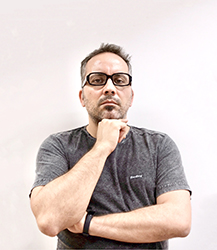
The story is old, but it deserves not to be forgotten. Unfortunately, it is common to see completely adulterated journalistic photographs these days. I don’t even talk about photographers who take or add elements to the composition of the image. This is totally unacceptable. I refer to the abuse of post-production in editing programs.
With the Covid-19 pandemic, I have seen thousands of photographs from around the world. There are fantastic images and other less good ones, as is normal. And then there are those too edited to add lights that don’t exist. To remove light that exists. To create more impact. To further dramatize the subject. Anyway, a panoply of reasons should lead photojournalists (?), Some of them renowned, to do such types of editing.
It is funny to see that when the photojournalist is little or nothing known worldwide, the photo is always “excessively edited”, “full of vignetting”, “too contrasted” or “stupidly colored”. But if a famous name is attached to the photo, it is common to see adjectives such as “brutal” and “fantastic”, like “big mesh”. Two weights and two measures, therefore.
Photojournalism and documentary photography must produce documents that are as real as possible. What matters is the fact, the news. If it’s sunny, it’s sunny, it’s not overcast. If the shadow is contrasted, it is probably because the photograph was taken at a certain time of the day. Please don’t change the reality.
With the fantastic .raw files (raw file) that many of the machines produce today, everything is very easily tampered with. I can, with relative ease, put a sky that turned white or gray, with a more bluish tone. And so on. There are countless possibilities for handling a raw photo file.
Photojournalism is factual. It is what it is and it is nothing that only serves for any jury of any contest to see an image of the other world, when in fact, what photojournalism has to do is show images of this world
In recent years, World Press Photo has been involved in some controversies related to the winning photos. In 2013, for example, many questioned the winning photo by Paul Hansen. The image shows a funeral for two children in the Gaza Strip, where people carry them and walk down a street. The photographer had terrible conditions to work, since he would be walking backwards while photographing that moment. The shadows and lights shown there afterwards do not match the light at the time the photograph was taken.
The scene is distressing, a great moment of photojournalism. But the way Paul Hansen decided to edit the photo can always be questionable. The first time I saw the photo, it immediately looked like a painting. The photograph was exaggeratedly ‘photoshopped’ to increase its dramatic impact. In fashion photography, production or digital art, these types of solutions are common and acceptable, but not in photojournalism. It’s ridiculous and embarrassing, in my view. Paul Hansen, by the way, ended up getting involved in other controversies after that.
But the problem does not arise, nor does it die in Paul Hansen. Steve McCurry, one of my photography gurus, was also involved in issues of changing the composition of his images with the removal of elements, perhaps to make the photo more beautiful or clean, in search of the perfect photo. With a lifetime dedicated to photojournalism and documentalism, McCurry explained, at the time, that he had not done photojournalism for a long time, when in fact his photographs were constantly published in the media. If it’s not photojournalism, I don’t know what will be. The author was badly photographed and, as a result, lost a lot of followers who loved his work since the famous Sharbat Gula, the Afghan child.
Many argue that it is not only in digital that ‘things’ are done to photographs. These ‘things’ are also possible in analog. Now, it just became easier.
Call me a puritan, outdated, grumpy, whatever you want. But I cannot accept that the reality as it has been seen through the lens is changed, to the point that this reality comes to be seen as a work of art. One thing is points of view, techniques or sensitivities. Photojournalism is not art, although it takes art and ingenuity to do it well. Photojournalism is factual. It is what it is and it is nothing that only serves for any jury of any contest to see an image of the other world, when in fact, what photojournalism has to do is show images of this world.
* Editor of the Portuguese channel of Plataforma


